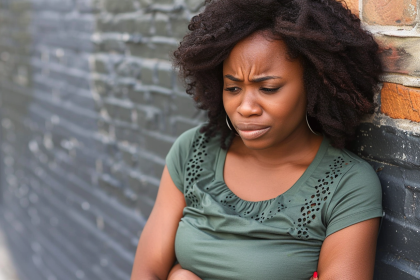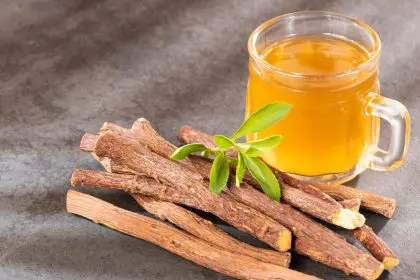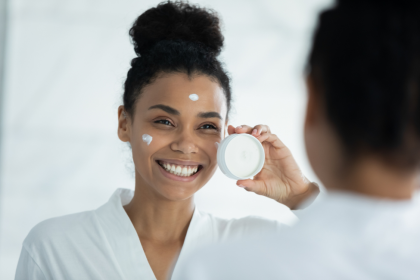Let’s get real for a second. That time of the month comes with enough drama without adding mysterious irritation and discomfort to the mix. But here’s the thing many of us don’t talk about enough—those products we rely on to keep things under control might actually be stirring up trouble in paradise.
Think about it. The average person who menstruates will use thousands of period products in their lifetime. That’s a lot of contact with some of your most sensitive body real estate. And yet, most of us grab whatever’s on sale without a second thought about what’s actually in these products.
What’s really happening down there during your period
Your vagina is basically a self-cleaning marvel with its own delicate ecosystem of good bacteria keeping everything in check. This perfect balance helps maintain a slightly acidic environment that protects against infections and irritation.
Enter your period. During menstruation, your vaginal pH naturally rises, becoming less acidic and temporarily more vulnerable to imbalances. This is exactly when you reach for period products—right when your body could use a little extra TLC, not potential irritants.
Blood itself can change your vaginal environment too. It’s slightly alkaline, which means it temporarily raises your pH even more. This normal shift makes choosing the right period products even more important.
The hidden ingredients lurking in conventional products
That innocent-looking pad or tampon sitting in your bathroom cabinet? It might be harboring some unwelcome guests. Many conventional period products contain surprising additives that rarely make it onto the label.
Conventional tampons and pads often contain rayon, polyester, polypropylene, and other synthetic fibers. These materials might help with absorbency, but they’re not exactly what nature intended to be in contact with your most sensitive tissues.
Then there’s the fragrance factor. Those “fresh scent” products might seem like a good idea, but artificial fragrances can contain dozens of undisclosed chemicals. Your delicate vaginal tissues can absorb these compounds, potentially leading to irritation or allergic reactions.
Even the pristine white color of most period products comes at a cost. Many manufacturers use chlorine bleaching processes that can leave behind trace amounts of dioxins and other potentially harmful compounds. While the levels are low, exposure adds up over time.
Signs your period products might be causing problems
Your body has ways of telling you when something’s not right. Pay attention if you notice these warning signs during or after your period.
Unusual itching or burning that seems to coincide with your period might be your body’s way of saying it’s not happy with your product choice. This discomfort often clears up after your period ends, which is why many people don’t make the connection.
Recurring yeast infections or bacterial vaginosis that cluster around your period could be a red flag. These infections happen when your vaginal microbiome gets thrown off balance—something irritating period products can trigger.
Mysterious rashes or irritation in your genital area might look like a heat rash or general sensitivity, but could actually be a reaction to components in your period products. If the irritation happens in patterns matching where products touch your skin, that’s a major clue.
Increased cramping or discomfort can sometimes be linked to tampon use, especially if they contain synthetic fibers or chemical additives that might affect sensitive tissues.
Better options for a happier vagina
The good news? The period product revolution is here, and your vagina can finally breathe a sigh of relief.
Organic cotton tampons and pads eliminate many of the problematic chemicals found in conventional products. Look for options that are unbleached or bleached using oxygen rather than chlorine. Your sensitive tissues will thank you.
Menstrual cups have been game-changers for many. Made from medical-grade silicone, rubber, or latex, these reusable cups collect rather than absorb menstrual fluid. This means they don’t dry out vaginal tissues or disrupt your natural moisture balance the way tampons can.
Period underwear technology has come impressively far. The newest options are moisture-wicking, odor-neutralizing, and can hold multiple tampons’ worth of fluid while still feeling dry against your skin. Many brands now make styles for different flow levels and preferences.
Reusable cloth pads offer another body-friendly alternative. Made from natural fibers like cotton or hemp, they avoid the plastic backing and synthetic top sheets of disposable pads that can trap heat and moisture—conditions that bacteria love.
Simple habits to protect your vaginal health
Beyond switching products, certain practices can help maintain vaginal health during your period.
Change your products frequently enough. Leaving tampons in too long isn’t just a toxic shock syndrome risk—it also creates a haven for unwanted bacteria growth. Similarly, wearing the same pad for too many hours allows microbes to multiply in the warm, moist environment.
Avoid douching or using intimate washes during your period. Your vagina cleans itself, and these products can disrupt your natural pH balance when it’s already in a vulnerable state. Plain water is all you need.
Cotton underwear allows better airflow than synthetic fabrics. This extra breathability helps prevent the warm, moist conditions that yeast and bacteria thrive in, especially during your period when moisture levels are already higher.
Track your reactions to different products. What works for someone else might not work for you. Keep notes on your phone about any symptoms that coincide with trying new period products.
When to talk to a healthcare provider
While some mild sensitivity is common, certain symptoms warrant professional attention.
Severe pain, especially if it’s new or different from your usual period discomfort, should never be ignored. This includes intense burning, stinging, or pain when inserting or removing tampons.
Unusual discharge that has a strong odor or abnormal color could signal an infection that needs treatment. Don’t assume it’s just “period stuff” if something seems off.
Recurring infections that happen cyclically with your period might indicate product sensitivity or another underlying issue that a healthcare provider can help identify.
Heavy bleeding that soaks through period products unusually quickly deserves medical attention, as it could indicate various conditions beyond simple product interaction.
Your body, your choice
The period product you choose is ultimately a personal decision based on your comfort, lifestyle, and body’s unique needs. The key is making that choice with complete information about how different options might affect your vaginal health.
Remember—that monthly visitor is already enough of an inconvenience without adding unnecessary irritation to the mix. Your vagina works hard to maintain its delicate balance. The least we can do is choose products that support rather than sabotage its efforts.
Your relationship with your period products is one of the longest-term relationships you’ll have. Make sure it’s a healthy one. Your vagina has been dropping hints—maybe it’s time to listen.














